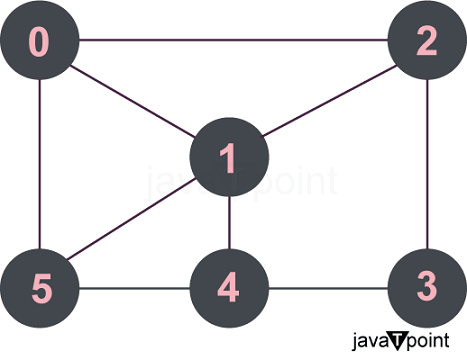Hamilton Cycle Detection in C++In this article, we will discuss Hamilton Cycle Detection in C++ with several examples. What is Hamiltonian Cycle?Hamiltonian Cycle or Circuit G is a cycle that travels around each vertex exactly once before returning to the first vertex. A graph is referred to as Hamiltonian if it has a Hamiltonian cycle; otherwise, it is non-Hamiltonian. There is currently no effective solution available to address the well-known NP-complete problem of finding a Hamiltonian Cycle in a graph for all known forms of graphs. It can be solved for small or specialized types of graphs. The Hamiltonian Cycle problem has real-world applications in a number of disciplines, including computer science, network design, and logistics. What do you mean by Hamiltonian Path?In a graph G, a Hamiltonian Path is a path that visits each vertex precisely once and is not required to go back to the starting vertex. Finding a Hamiltonian Path in a general graph is NP-complete and can be difficult, much like the Hamiltonian Cycle issue. Although, it is frequently a simpler job than locating a Hamiltonian Cycle. Applications for Hamiltonian Paths include circuit design, graph theory research, and determining the best paths in transportation networks. Backtracking:Backtracking is an algorithmic method for solving problems based on recursion that involves creating each and every solution incrementally and eliminating any solutions that fail to satisfy the restrictions of the problem at any moment. Let's review the definition of a Hamiltonian cycle. Hamiltonian cycle:In order to return to the starting vertex from any source vertex, we must visit each of the vertices exactly once. Let's examine the problem now. Problem Statement:Let us take an undirected graph with N nodes. This graph is shown as an adjacency matrix with dimensions N x N. It is our task to print every conceivable Hamiltonian cycle. Example:This is how the provided graph is shown: 
The given graph is represented by an adjacency matrix. { 0, 1, 1, 0, 0, 1 } { 1, 0, 1, 0, 1, 1 } { 1, 1, 0, 1, 0, 0 } { 0, 0, 1, 0, 1, 0 } { 0, 1, 0, 1, 0, 1 } { 1, 1, 0, 0, 1, 0 } Output: 0 1 2 3 4 5 0 0 1 5 4 3 2 0 0 2 3 4 1 5 0 0 2 3 4 5 1 0 0 5 1 4 3 2 0 0 5 4 3 2 1 0 We can see that by going over every vertex in the graph exactly once, we can get to our source (in this case, 0), by traversing the graph in the form 0->1->2->3->4->5->0. As shown in our report, we may repeat the same process using several pathways. Working mechanism:The next step is to take the following method in order to print every Hamiltonian cycle in an undirected graph.
To Print All Hamiltonian Cycles in an Undirected Graph, Use This Pseudocode: procedure isSafe(int v, int graph[][6], vector<int> path, int pos): procedure FindHamCycle(int graph[][6], int pos, vector<int> path, bool visited[], int N): procedure hamCycle(int graph[][6], int N): Program:Output: Hamiltonian Cycle: 0 1 2 3 4 5 0 Complexity EvaluationTime Complexity: O(N!). N! iterations of the matrix are performed, where N is the number of nodes in the network. Space complexity: O(N). The space needed to print the paths will occupy N nodes because there are N nodes in the graph.
Next TopicInsertion in Splay Tree in C++
|
 For Videos Join Our Youtube Channel: Join Now
For Videos Join Our Youtube Channel: Join Now
Feedback
- Send your Feedback to [email protected]
Help Others, Please Share









